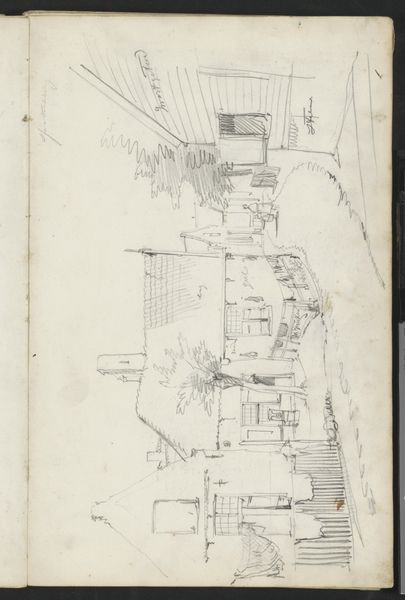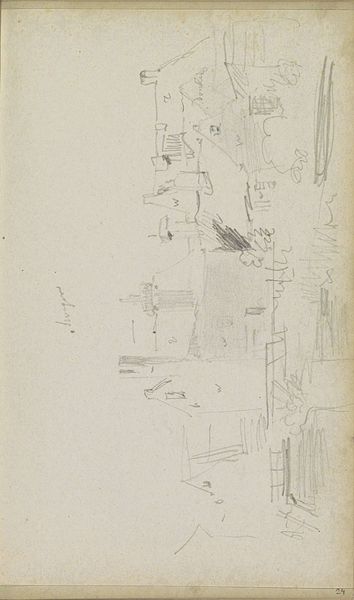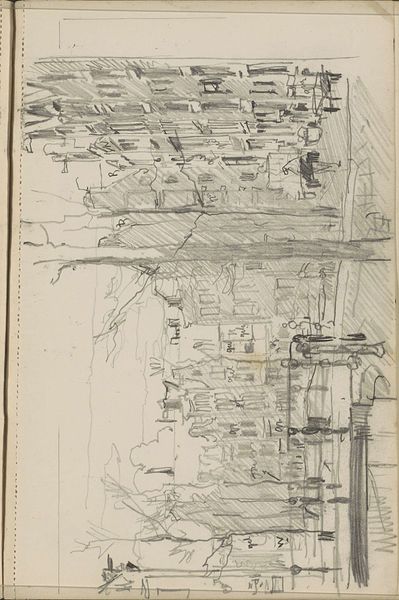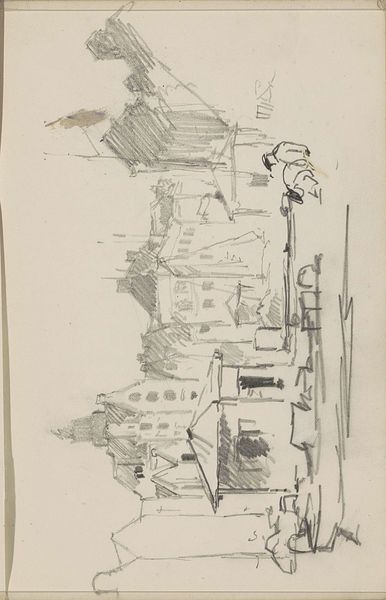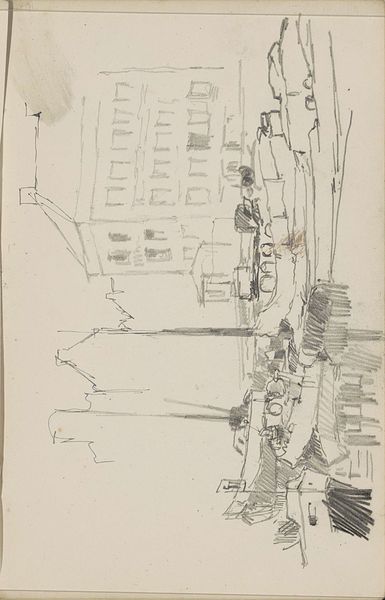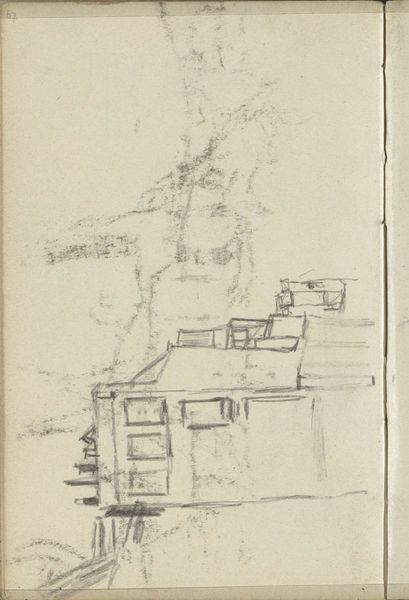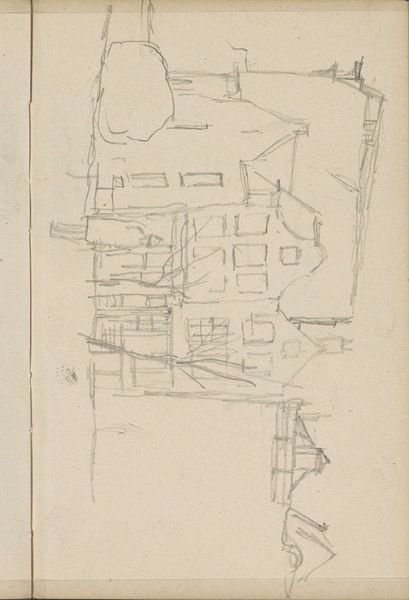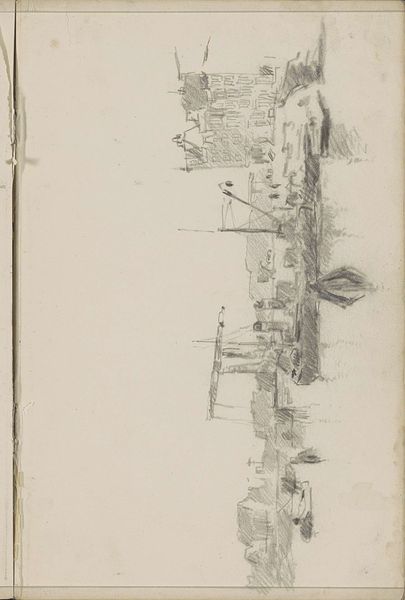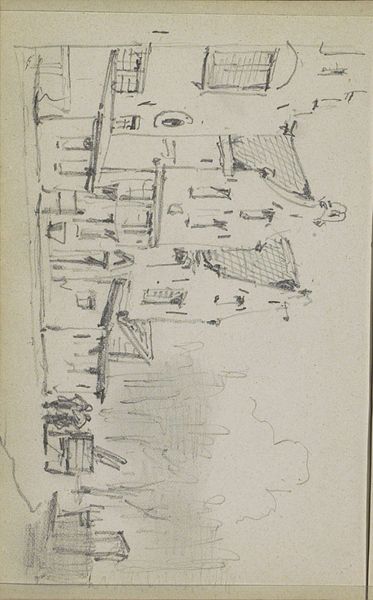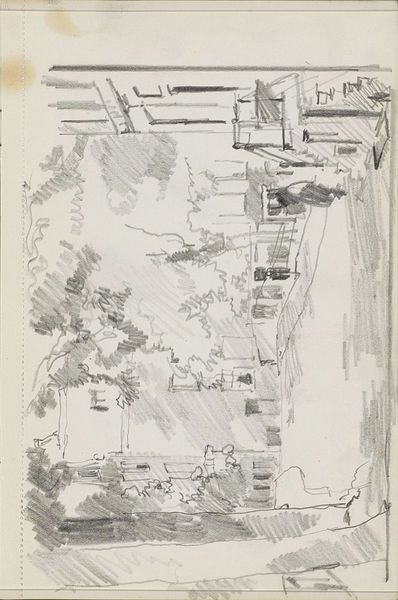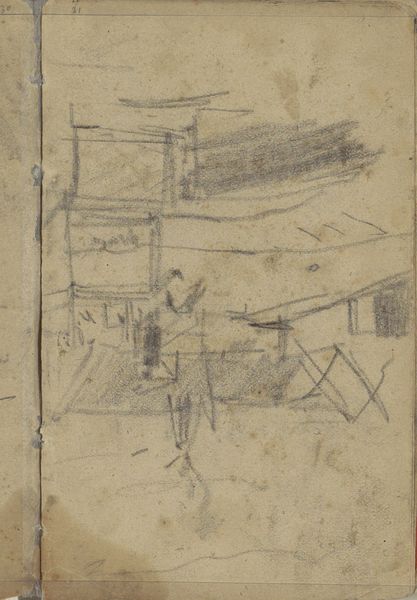
Copyright: Rijks Museum: Open Domain
Willem Koekkoek made this pencil drawing, "Slot op een heuvel, mogelijk te Quedlinburg" or "Castle on a hill, possibly at Quedlinburg," in the 19th century. The image presents an intriguing look into the culture of landscape art and its function within the expanding art market. The drawing depicts a castle, possibly Quedlinburg, perched atop a hill. The quick, light strokes suggest a spontaneous sketch, perhaps made en plein air. During the 19th century, landscape art, particularly scenes of picturesque towns and historical sites, became increasingly popular among the rising middle class. Koekkoek, coming from a family of successful painters, was very aware of this trend. By depicting such scenes, artists like Koekkoek not only captured the beauty of the landscape but also contributed to the growing sense of national identity and historical consciousness. Understanding the socio-economic context of art production in 19th-century Netherlands can be gleaned from sources such as period exhibition catalogues and market reports. The art of the time can also be examined for nationalistic sentiment. In this way, we can better appreciate how art served as a tool for cultural construction and social commentary.
Comments
No comments
Be the first to comment and join the conversation on the ultimate creative platform.
